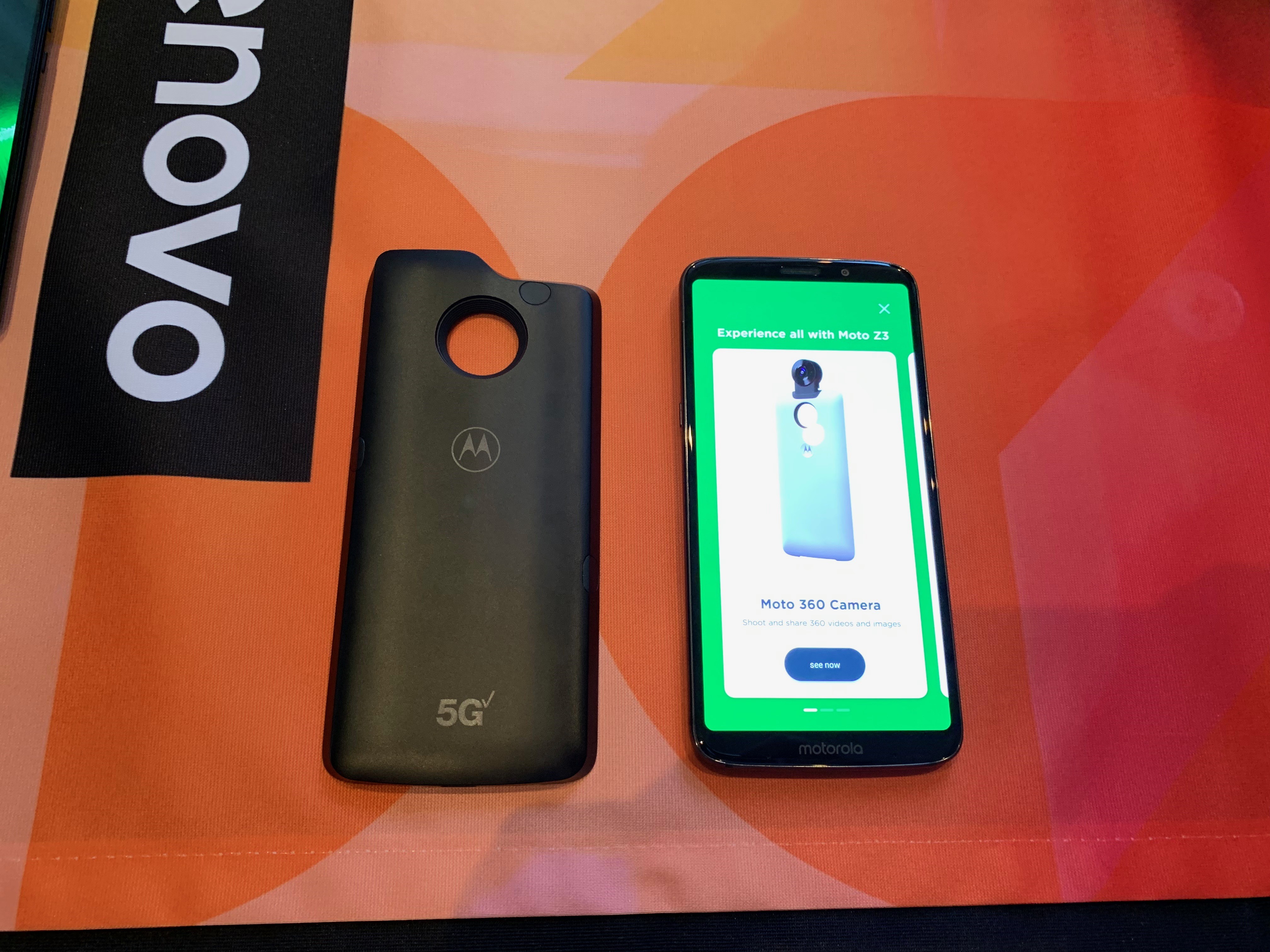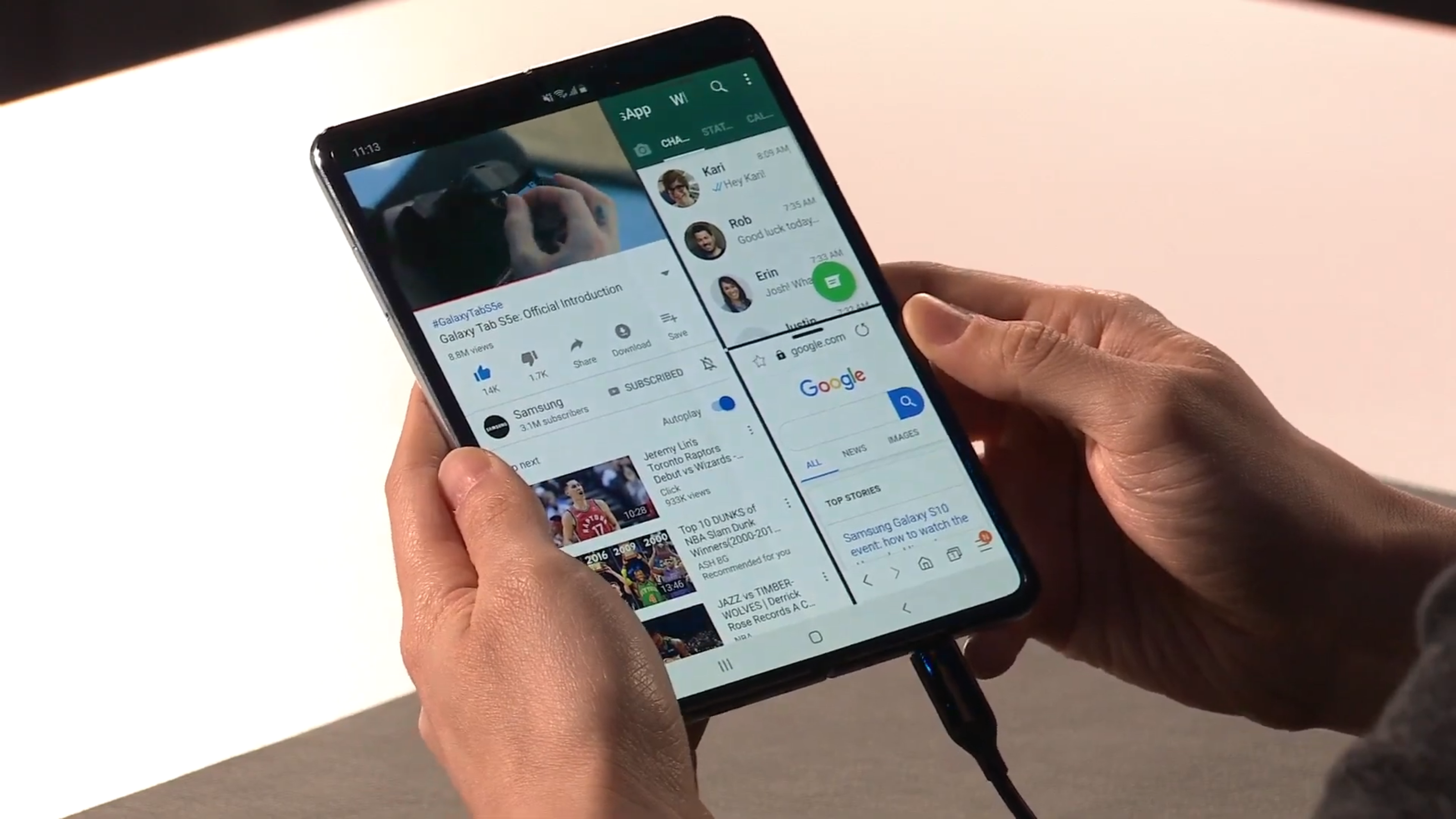What will future 5G smartphones look like?
Industry experts believe a new era is upon us

No sooner had the wraps been taken off the first 5G-compatible smartphones last month did the industry’s attention turn to the next wave of devices.
Samsung, Oppo, Huawei, LG and Xiaomi were among the manufacturers to show off handsets at Mobile World Congress (MWC) in Barcelona, hoping to capture early adopters eager for the enhanced mobile broadband services afforded by 5G.
But the mobile industry is characterised by constant change, as evidenced by the discussions at the show. Qualcomm detailed its second generation 5G modem, the Snapdragon X55, while analysts talked about when 5G smartphones would become a mainstream segment. Others wondered when Apple would throw its hat into the ring.
- Motorola targets mid-range in 5G era
- All the best phones we saw at MWC 2019
- What is 5G? Everything you need to know
Initial adoption rates
The general consensus is that initial 5G sales will be modest. Deloitte’s figures suggest just one million 5G handsets will be sold in 2019, with UK sales as low as 50,000.
However, the long-term view is optimistic. Experts believe the standardisation of 5G Release-15 late last year, along with the advent of the Qualcomm Snapdragon X50 modem chip, has put the industry on a solid foundation for adoption.
“Many of the handsets you’re seeing [at MWC] are because of the great work Qualcomm did last year,” says Shaun Collins from CCS Insight. “We expect 5G to get very big, very quickly and it will be at least as big as 4G which was the fastest adoption of any mobile technology ever. Much like 4G, once you get it, you won’t be able to live without it.”
Adoption will of course depend on how operators choose to price 5G. Some, like EE, have suggested a premium of a few pounds is realistic, but some research indicates that although consumers recognise the benefits of 5G, they are unwilling to pay for it.
Are you a pro? Subscribe to our newsletter
Sign up to the TechRadar Pro newsletter to get all the top news, opinion, features and guidance your business needs to succeed!
For operators banking on 5G to deliver new sources of income, this is concerning. But the fact is that 5G will reduce the cost-per-bit and new applications in the business and consumer markets will help drive adoption and revenues.
Collins says it is unlikely operators will charge a “like-for-like” premium for 5G, with additional revenues secured from expanded connectivity and service packages. 5G devices, and what they are capable of, will have a huge impact on adoption.

The first wave
For manufacturers, 5G is seen as a way of arresting falling shipments. More expensive phones, longer refresh cycles, and a lack of new markets are all contributory factors. But analysts say this shouldn’t detract from what is still a huge market.
“You only have to walk around these halls to know that this is one of the most amazing product categories in the world,” says Ben Wood of CCS Insight. “[Up to] 2 billion phones will be sold this year – that’s 63 every second.”
Another reason given for market downturn is a lack of innovation. The first tranche of 5G devices are largely similar to previous generations, but MWC 2019 gave us a first real look at the next stage in form factor: the foldable.
The Samsung Galaxy Fold was on display, as was the Huawei Mate X, the latter of which is 5G compatible.
“[Foldables are] not a new technology,” adds Wood. “This a technology that has been in development for years. I first saw a flexible display in 2010 in Korea. The first one we saw in the marketplace was at CES in 2011. There have been concepts and people were wondering what we’d use [technology] for?”
“But these [latest] devices are the stone age of folding displays. We’re at a complex time.”
Wood acknowledges these devices are expensive but doesn’t understand why the price is such a bone of contention. Manufacturers, he says, expect foldable handsets to mainly be of interest to early adopters so they can understand how the form factor is used in the wild and behaves over an extended period of use before they become mainstream. This, he believes, will be around 2022.
“I’m extremely [confused] about how outraged people are about phones above $1,000. Early smartphones were expensive,” he says. “But manufacturers will be very nervous about selling large volumes of these devices because we don’t know how long they’re going to last. If I was a manufacturer, I’d keep volume low, prices high and learn about how this technology works.”

The future of 5G smartphones
However future 5G handsets could be even more radical, breaking long held conventions about mobile phone design. Instead of using just one device with a singular input, consumers might have several devices connected to the same data connection, offering a range of interaction possibilities. This includes a touchscreen display of course, but also voice and sight.
“The user interface on a phone is picked from the first non-smart devices,” says Motorola’s Jeff Snow. “The menu system isn’t that far off from the first mobile phones and that whole user interface is actually ripe for change. People will rely less on that 6.5-inch smartphone in their pocket … and thanks to smart speakers, people are well versed at speaking to devices.”
“There’s a lot of focus getting younger users less addicted to a screen,” adds Caroline Milanesi, an analyst with Creative Strategies. “[In the future] they’ll be able to live more in the moment rather than looking at a screen.”
One way operators could promote 5G is a unifying platform for the connected world.
“For carriers and vendors, it’s difficult to identify the applications that get consumers excited,” suggests Milanesi. “But if you think of 5G as a way of connecting to other devices and the cloud, the freedom of the cloud frees you up to do that multi-device approach.
“I hope that operators are smart when it comes to pricing for 5G. This is something they’ll want consumers to have. The way to think about 5G is as a multi-device [solution]. Consumers will pay but [operators have to price]in an intelligent way.”
- Here are the best mobile phone deals for March 2019
Steve McCaskill is TechRadar Pro's resident mobile industry expert, covering all aspects of the UK and global news, from operators to service providers and everything in between. He is a former editor of Silicon UK and journalist with over a decade's experience in the technology industry, writing about technology, in particular, telecoms, mobile and sports tech, sports, video games and media.